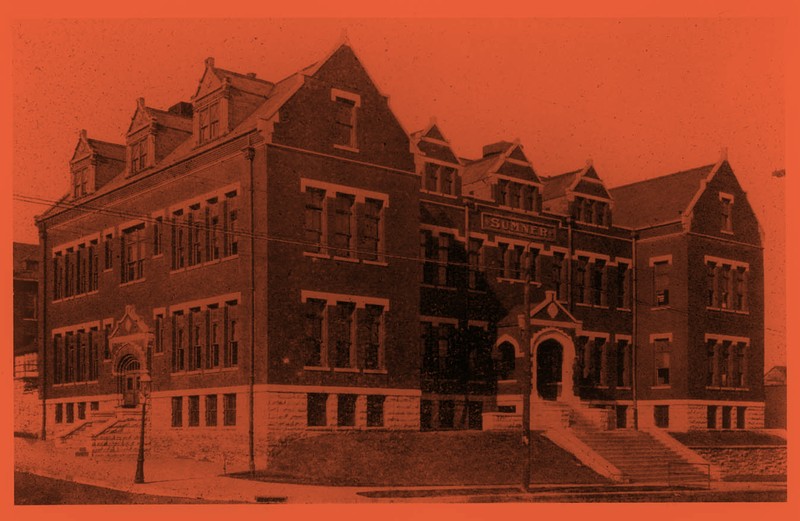Sumner High School
Introduction
Text-to-speech Audio
Sumner High School was built on the corner of 9th and Washington Blvd. in Kansas City, Kansas following a 1905 law authorizing the segregation of schools within the state. As a countermeasure for the recently passed law, the Governor built a new school to service the growing African American community, with the intent for the courses to be devoted to manual training. After the community objected, a more well-rounded curriculum was adopted that focused on college preparation. A few years after opening (without a name) the school was named in honor of Charles Sumner, an abolitionist and leader who fought for the rights of African Americans. Sumner High School provided an exceptional education for all those in attendance, as many of the educators held high-level degrees and many of the students excelled to the point of state, regional, and national recognition.
Images

Sumner Academy
.jpg)
Backstory and Context
Text-to-speech Audio
Sumner High School was built on the corner of 9th and Washington Blvd. in Kansas City, Kansas following a 1905 law authorizing the segregation of schools within the state, the Governor built a new school to serve the growing African American community. Sumner High School was named after Charles Sumner, a famous abolitionist whose values were deeply rooted in the ethics of Sumners’ academic community. Despite the additions of new rooms as well as a gym in 1924, the growing African American population in Kansas City Kansas quickly outgrew the school building, and with Sumner High School continuing to grow very quickly by 1939, the school had moved to a new, larger campus on 8th and Oakland.
As soon as Sumner opened, the community created an academic culture that was centered on nurturing students and created an exemplary college prep curriculum, despite the School Board pushing for a manual training or vocational focus. As a result, the majority of graduates from Sumner went on to pursue higher education. Not only that but Sumner was home to the highest percentage of public school teachers with graduate degrees, which no doubt helped this school rise to its prestigious ranks. By 1914, Sumner had received membership in the North Central Association of Secondary Schools (NCASS) as a result of the school's high-ranking achievements.
In its 73-year history in which the school operated, there were only six principals, with J.A. Hodges serving a 35-year term. Sumner High reached the end of its life in 1978, when racial integration of schools in Kansas became a federally-mandated issue. The legacy of Sumner was hard to dampen though, as shortly after its closure, the school reopened as the Sumner Academy of Arts and Sciences, continuing to educate the Kansas City Kansas community today in the tradition of academic excellence. In 1984, the Sumner High School Alumni Association was established to aid in preserving the memory of Sumner and its lasting legacy and remains active to this day. One can visit the Chester C. Owens, Sumner Alumni room to learn more about the history of Sumner High School and the alumni. A memorial stands at the former site of the school.
Sources
Anderson, Hazel Blair. The History of Sumner High School, Sumner High School of Kansas City, Kansas. Accessed June 8th 2022. https://www.classcreator.com/Kansas-City-Kansas-Sumner-1905-1978/class_custom.cfm?page_id=952397.
Discovering Family Heritage, Accessed June 8th 2022. https://www.visitkansascityks.com/sp/family_heritage_2017/.
Sumner High School, The University of Kansas. Accessed June 8th 2022. https://exhibits.lib.ku.edu/exhibits/show/education/sumner.
https://sumner.schools.kckps.org/
https://sumner.schools.kckps.org/
